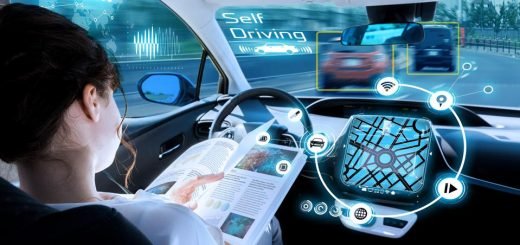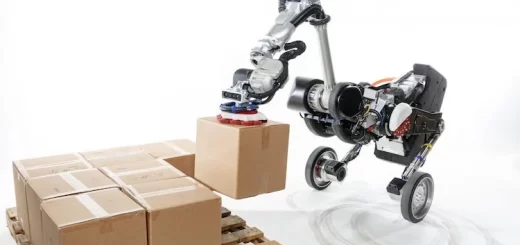Telepresence robots uses, advantages and disadvantages
Telepresence robots have been used in various domains, such as providing home care assistance for elderly people, changing the dynamics of a blended learning design studio class and facilitating virtual school attendance by students with physical disabilities, In the field of FL learning, Telepresence robots in classroom settings improve learner interest, confidence, and motivation.
Telepresence robots advantages
Telepresence robots enable their users to remotely interact with and observe people & their surroundings without being physically present there themselves, Telepresence robots have the potential to add mobility and adaptability to traditional modes of video conferencing, They are used in the everyday activities of companies and businesses.
Telepresence robot decreases corporate travel costs, It reduces the fatigue occasioned by long journeys for work, It makes telework easier, It reduces CO2 emissions, It allows people unavoidably elsewhere to be virtually present at meetings/in the office and it offers lots of future potentials, The use of telepresence robots will increase new creative applications for the technology.
A telepresence robot is used for multiple purposes, it can be virtually present in another place, There are different models, Telepresence robots can be found not only in offices and factories but in hospitals, nursing homes, schools, colleges, real estate agencies, museums, at trade fairs and, increasingly, in homes.
Telepresence robots are one of the robotics categories with the greatest diversity of products, They offer an alternative to be considered in cases where the travel involved for meetings or visits to the branches of a more routine nature, They can be used in the factory inspection tours, without the inspector having to be present on the ground.
With the evolution of Telepresence robots, There will be a better audio/video experience, Increasing the battery power will allow more autonomy and less dependence on the Wi-Fi of the environment in which the robots find themselves, Future robots will understand spoken orders & will have more sophisticated sensors, enabling them to function independently, thus freeing up the operator for other tasks.
There are many opportunities for using telepresence devices in sectors such as retail, customer services, education & healthcare, Telepresence robots are the new wave of tech in workplace Telecommunications, They have made significant changes to the workplace, and many employees & managers can work from home or other remote locations, Telepresence robots are very useful to the work-life balance & increase the productivity.
The most common form of the telepresence robot is the tablet on a Segway or iPad on a stick, These devices are pretty simple in appearance, The tablet is set on the shaft at about head height, connected to the wheeled base, Some robots have additional cameras or audio equipment attached to the shaft.
Early versions of telepresence robots were unable to keep up with the normal human walking pace, They could not cope with even minor obstructions on the floor, and suffered from poor controls and lackluster audiovisual quality, but new telepresence robots can keep up or slightly surpass normal walking speeds, They offer high-quality audiovisual feeds and they can cope with minor obstructions.
The head-on-a-stick version of robots is the beginning, There are more-humanoid robots in various stages of development, More advanced robotics would allow the person to be present not only for communication but will enable the remote worker to help with tasks as well, Being able to explore the company’s offices physically creates a greater sense of inclusiveness & allows personal interaction.
Although there are simpler methods of attending meetings remotely, being telepresent in a mobile robot allows for some more subtle experiences, A Telepresence robot can move to speak with the people in the room, The people who use robots to communicate remotely rather than using simple video or audio feeds have a greater feeling of control.
A telepresence robot is used for more effective telecommunication between people who work from remote locations, Telepresence robotics is a technology via telecommunication that makes people feel present at the physical location, All the communication is done over the internet, Telepresence robotics increases productivity & it reduces expenditure.
Telepresence robots go beyond traditional video conferencing to offer the customer the closest experience to being in a place they’re not physically in, telepresence robotics offers face-to-face interactions between the people in the meeting through the transmission of life-size, high-definition images and audio.
Telepresence is an immersive video experience that mimics a lifelike experience as if you are in a room with people, Telepresence robot allows you to have more meetings without having to travel, You can visit three or four cities a day using telepresence, rather than flights, It allows employees to spend more time at home, It helps children in communicating with teachers who speak a different language.
Using a child-operated telepresence robot system is very useful for remote education, Video conferencing is common in educational settings, where a foreign language is taught by a native teacher from a remote location, there is a serious issue in that children tend to have difficulties or freeze when facing teachers who speak a different language over a monitor.
The teachers can teach a lesson from anywhere with the help of telepresence robots, The robots are in classrooms, and their cameras & sensors are the eyes and ears of the teacher, The signal (speech and image) is broadcast to tablets, smartphones, and laptops of students or a large monitor, This makes telepresence robots comfortable for distance learning.
Robots become an integral part of the education system, They begin to teach, participate in educational games and make presentations, Electronic boards, touch panels & robots can be used instead of teachers, The child-operated telepresence robot offers physical participation.
Robots can perform different roles in school, Severe injuries or their consequences, immunity glitches and other serious ailments prevent many children from attending school on a par with peers, Robots are created especially for them, They have high mobility, They offer the possibility of interactive learning, They eliminate barriers between pupils & teachers.
Children-autists are very confused and distracted from the learning process because of facial expressions and non-verbal signals of others, So, robots with their unchanging appearance are ideal mentors for them, Telepresence robots offer interactive training, and the robot replaces the teacher- human in remote schools.
Telepresence Robots disadvantages
The quality of audio/video could be improved, Robot can’t manage doors, stairs, lifts, etc, It shows little capacity for spontaneous social interaction, It has short autonomous battery life, It is priced on the high side, It needs to be integrated with corporate security systems, Learning to pilot the Telepresence robot is demanding and the office conditions are not always ideal for it, what with the obstacles, sloping floors, uneven Wi-Fi signal, etc.
Telepresence robots can’t interact socially with their human environment, But at conferences and business occasions, conversations of interest can arise unexpectedly and informally anywhere at any time with anybody, The robot can’t respond, improve and capitalize on such encounters, and it is not like the human ability to shape communication to suit the person and the circumstances.
Many of the disadvantages of the advanced telepresence robots come from the lag time in communicating remotely or the awkwardness of the person conversing through or with the machine, Some problems with telepresence robots include the lack of human intimacy, Robot can’t act on certain methods of communication, This includes nonverbal body cues that demonstrate a person’s mood, intent, and more.
Telepresence robots offer a lack of access and sturdiness, Current telepresence robots are rather flimsy machines, They are easily toppled over and cannot traverse anything but smooth floors without issue, Some drawbacks that may come with telepresence robotics such as price, battery life & connectivity, it would need human assistance to keep running via Wi-Fi as telepresence robotics is limited to the network.
The price of telepresence robotics is a bit high, Plus additional costs relating to the battery which would be the cost of the charging docks, The battery life is eight hours after a full charge depending on the usage which would be a big disadvantage since the use of a telepresence robot is not limited to video conferencing, it can also be used for security surveillance as well.
Other people may end up with the future use of telepresence robots since one person would be able to survey several different locations at once limiting the number of hires in remote areas and creating future job loss for current employees in case of downsizing.
Robot teachers use, advantages and disadvantages
RP-VITA telemedicine robot review, features, advantages and disadvantages
Web Conferencing (Video Conferencing) use advantages and disadvantages
Ava Telepresence Robots review, features, advantages, disadvantages & How do Ava robots work?



